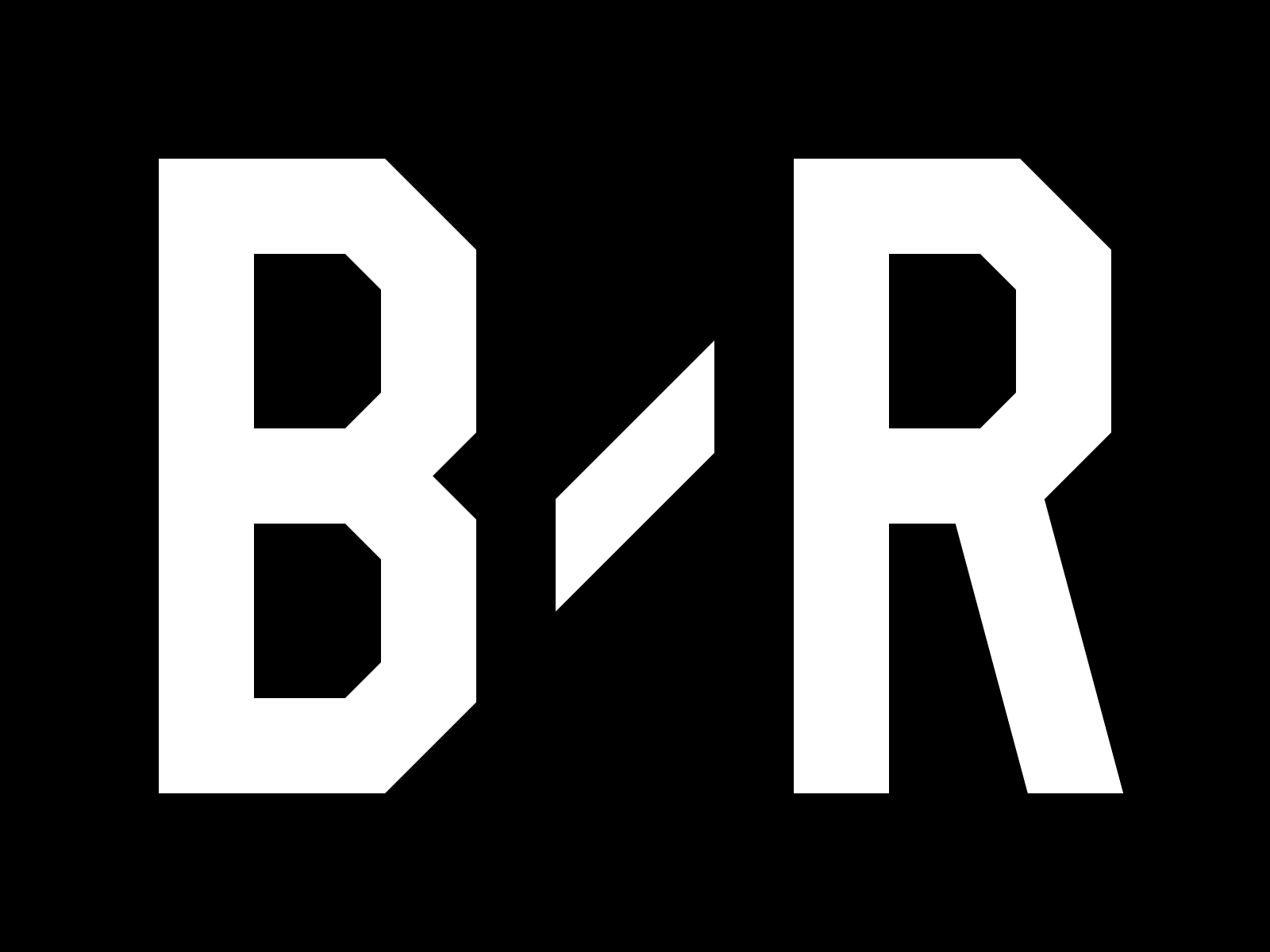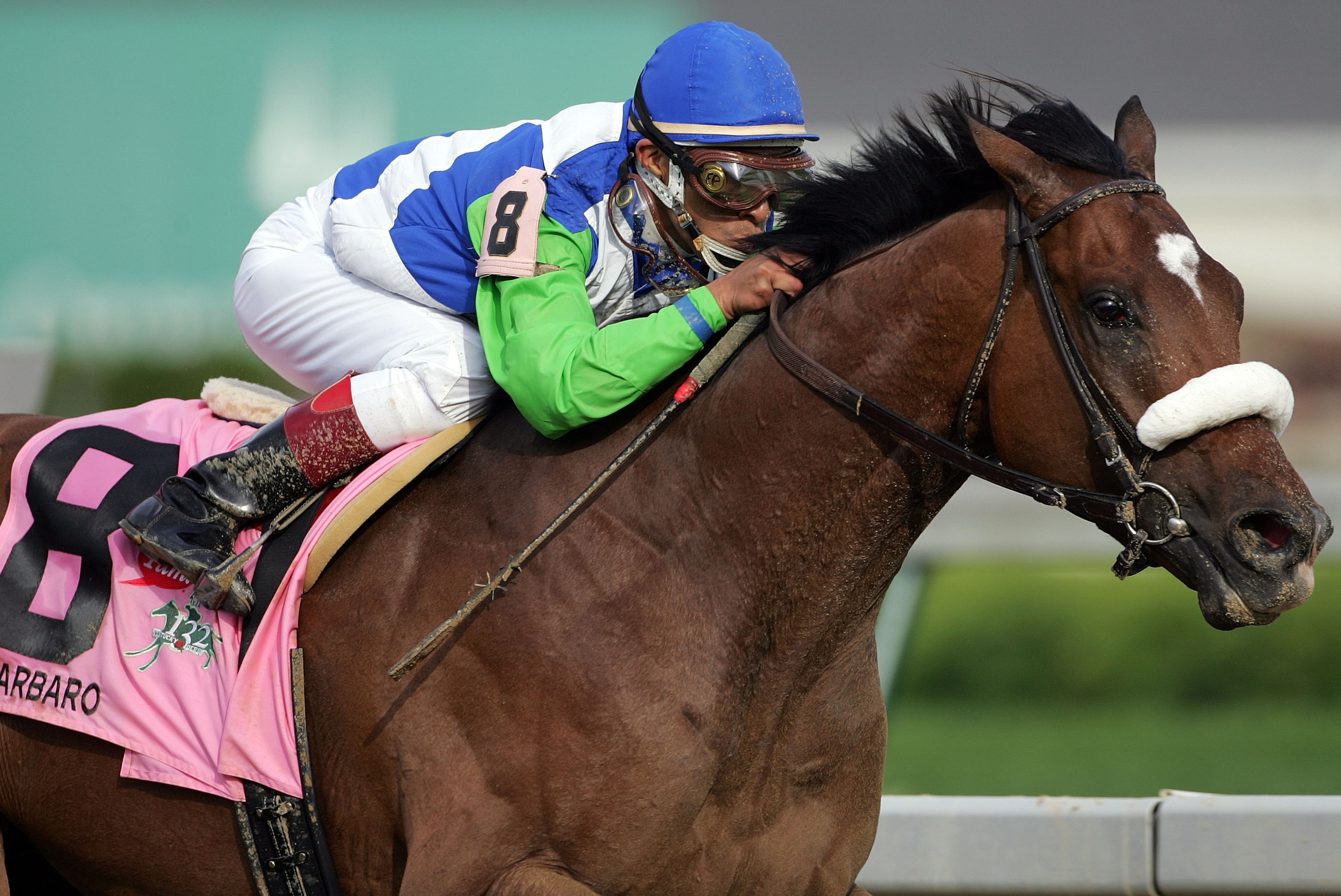Churchill Downs, the site of the Kentucky Derby, doesn't take statues lightly. There stands one of Aristides, the first winner from 1875, and there's another, which was erected 134 years later.
It's not of Secretariat, the Derby's fastest horse; it's for Barbaro, the emphatic winner of the Kentucky Derby in 2006, who suffered a catastrophic, eventually fatal injury during the Preakness Stakes and died over seven months later after complications with laminitis. He stands immortal in full flight before the doors of the Derby, above a structure containing his ashes.
The inscription below the statue, a quote from early 20th century Scottish rugby star Eric Liddell, says: "I believe God made me for a purpose, but He also made me fast. And when I run, I feel His pleasure."
That statue stands for something greater than roses; it's a testament to will, endurance and maybe, most of all, love.

Jeannine Edwards, a reporter for ESPN who covers horse racing, wrote the following in the foreword to Alex Brown's Greatness and Goodness: Barbaro and His Legacy:
Perhaps once or twice in a lifetime, an event or encounter leaves a mark upon our soul and changes us forever. While at times the impact or meaning may not be evident for years to come, these experiences have a way of leaving us better, more enlightened people. For many, Barbaro's struggle for survival was one of those events.
You remember it, don't you? How people formed a bond to a racehorse? In his finite strides, his gravity bound all of them to his orbit. For some, Barbaro's tragic death is what they remember most. But for many, maybe even you, it started at the top of the stretch.
Barbaro charged to the lead at the quarter-pole of the 132nd Kentucky Derby, and racecaller Tom Durkin piped, "Barbaro turns it on!"
Barbaro's ears pinned down and—whooosh! jockey Edgar Prado said in his book My Guy Barbaro: A Jockey's Journey Through Love, Triumph, and Heartbreak with America's Favorite Horse. In Prado's 5,500-plus career wins, he never felt that kind of acceleration, the kind reserved for 747s charging headlong into the wind.
You remember Barbaro leading a herd of 20 horses, all by himself, the freshest, the biggest, the baddest bay colt reaching out, pulling that Churchill dirt and throwing it back at his pursuers.
He extended down the stretch with the ease reserved for the truly gifted, the one-of-a-kinds, the chosen.
"And it is all Barbaro in a sublime performance!" yelled Durkin. "He runs away from them all, and he has saved something left for the Preakness. ... This was a no-doubt-about-it winner."
Prado, Barbaro's Peruvian jockey with the infinite, ivory smile, flashed Barbaro the stick. No swing, no kind reminder to stay on pace.
They hit the wire, and when Prado loosened his hold on the reins, Barbaro looked around as if to say, "That's it? I have to stop?"
That gallop-out after the Derby was every bit as impressive as the win itself. Gretchen Jackson, who owned Barbaro with her husband, Roy, remembers that moment as perhaps the Kodak-iest of the entire race, of his entire career. It's how she chooses to remember him, all these years later.
For you see, at that moment, the only thing stopping him was himself.
Few horses dominate the Kentucky Derby like Barbaro did on that day, May 6, 2006. He won by 6 ½ lengths in a hand ride, the largest winning margin since Assault won by eight lengths in 1946.
"With the ease he did it, it looked like he was going the right way, maybe even a Triple Crown win," said Barbaro's trainer, Michael Matz. "He did it so easily. He had a lot left. He was just fresh. You never think more than that race."
Matz knows that in this game, no matter how dominant the horse, how transcendent the talent or how certain it seems, you never think more than that race.
Not then. Not now. Not ever.
The Kentucky Derby winner holds a sanctuary in your hearts. Every year, horse racing fans hunger for a Triple Crown winner.
You felt it when American Pharoah won the Belmont Stakes in 2015, right? When he pulled ahead of all of those lucky enough to get within a whiff of his feathered tail? It brought tears to people's eyes. Fans to their knees. Grown men were hugging total strangers.
That should have happened 10 years ago to a horse many regarded after the Derby to be the 12th Triple Crown winner. All he had to do was show up.
Brown, who wrote Greatness and Goodness and galloped horses at Barbaro's base of Fair Hill in Maryland, said, "It was a mood of pure optimism. We knew Barbaro was very good. He had proved himself time and time again. He had an easy breeze at Fair Hill. He looked fantastic. The Derby had taken nothing out of him. Prado had geared him down pretty good close to the end. Why would we not think this horse could go all the way?"
You remember Barbaro pacing around the grass at Pimlico where trainers saddle horses prior to the Preakness? Barbaro looked agitated, which, for a thoroughbred racehorse of the highest order, isn't entirely uncommon.
Prado, who knew Barbaro was a grass horse at heart (he won his first few races on the turf), figured Barbaro was gearing up for a turf race. Why else would he be saddled on the grass instead of inside the cloistered paddock where he geared up his tack for emphatic wins in the Florida Derby and Kentucky Derby?
In the starting gate, Barbaro slipped into Post 6. Diabolical, a colt who had trouble loading, entered his stall with the front gate open. Some horses prefer this. The crew slammed Diabolical's gate, and Barbaro, normally calm and professional, kicked out with his forelegs, smashed his gate open and began running down the stretch with Prado yanking on the brakes.
"It happened in a flash," wrote Prado, "much too quickly for me to prevent it, but as Barbaro galloped down the track alone, everything seemed to unfold in slow motion. I was horrified. My heart hammered. My mind raced. Why was this happening now of all times?"
Prado looked down at Barbaro's legs. He hoped to see blood oozing from a laceration, anything, so he could point to the leg and signal to the vet and say the horse couldn't race. To hell with it if Barbaro won the Kentucky Derby. To hell with the Preakness, and to hell with the Triple Crown. Prado felt a connection to this horse like no other in the thousands he'd been on before. No Triple Crown glory was worth risking Barbaro's long-term health. As Prado saw it, "Barbaro had so much ahead of him, so many other races to win."
No such luck. The vet cleared Barbaro. The race would go on with the Derby winner.
You know what happened next. "Tragedy on the first turn," as racecaller Dave Johnson said.
Fourteen seconds into the race. Barbaro mid-pack. A bad step, as they call it in horse racing parlance. Prado pulled him up. Jumped off of him. Moved him to the outside. Put one tiny hand on the bridle, one tiny hand on Barbaro's left wither to support the now-favored, now-shrapnelled right hind limb. Barbaro kicked it in discomfort.
Prado put his hands on his knees, bent 90 degrees at the waist. His unused whip stuck out to the side. Peter Brette, a friend of Prado's and an exercise rider for Barbaro, put an arm around Prado. And there, cast aside like a soldier's armor, lay Barbaro's saddle, covered in black.
Barbaro entered the horse ambulance. Gretchen recalled: "It was loud at Pimlico. His head was out of the trailer. He was looking out the trailer window, at the grounds, ears pricked, not an invalid. He was vanned off looking out the window. He was interested in what was going on."
It was the equivalent of a football player giving a thumbs-up while being carted off the field.
You probably remember what happened next, as it was all over the news.
Dr. Dean Richardson, one of the foremost equine surgeons in the country, performed reconstructive surgery on Barbaro's heavily fractured leg. It took several hours and 27 screws, but Richardson, a man confident in his skills—a clean-cut, could-pass-as-an-Army-officer guy—sewed up Barbaro, put the cast on the leg and set him down in the recovery pool.
"I'm not thinking this is Barbaro," Richardson recalled. "It's 'How do I address this fracture?' I'm thinking of it in parts."
The horse can help or hurt in these situations.
"Some horses are just not going to help you or themselves," he said. "The old cliche is a horse is either homicidal or suicidal. He was a very kind horse, terrific character in how he dealt with humans. He was good to himself."
So too were the Jacksons.
"I adore the Jacksons," Richardson said. "They are genuine people. They really cared about the horse. Genuinely cared. Everything that was done on that horse was for the right reasons."
Mail flooded the New Bolton Center in Kennett Square, Pennsylvania, where Barbaro lived out his days. Sick children in Africa. Sheiks from Dubai. Military personnel. Barbaro's fight drove straight to the heart.
"They always say things happen for a reason, but I don't know what this reason was, but we will never know," Matz said. "It's one of those things."
Richardson said the horse was doing well, but it was always a 50-50 chance. The key was to keep him from developing laminitis, a deadly hoof disease unique to horses where the bone starts to perforate the hoof wall. If a horse doesn't distribute its weight equally among all limbs, laminitis can set in, and the horse will be humanely euthanized.
And laminitis did set in. It wasn't good. There was no escaping it.
Prado wrote: "It was the way he came to me when he saw me, ears pricked, anxious to communicate. It was the warm look in his eyes when he heard my voice. It was his sense of humor, the way he teased me when I fed him a baby carrot, looking away and then swooping back in with a gulp.
"I think in the end, his will to survive became the backbone of his popularity. The worst imaginable obstacles had been thrown in his path, but he refused to give in. People could find inspiration in that. We all go through bad times, but here this horse was showing us that it was possible to keep going, that anything could be overcome. Barbaro was showing us courage."
On January 28, 2007, more than seven months after the Preakness, Gretchen, who had not spent any one-on-one time with Barbaro in his stall, decided now was the time.
"I sat in his stall for hours, being with him," she said. "He knew it was time. He wasn't interested in life. He quit. He was standing by the door. That's the only time I was in his stall alone for any length of time. He was fit. He'd bite at you. I was probably scared of him that way. He commanded a lot of respect. I don't know if I talked to him much. The mere presence was appreciated by him. I had to do it. I wanted to be by him."
The next day, they put him down.
Maybe you felt it when you heard the news. Your stomach may have dropped. You may have cried. You weren't alone.
Barbaro transformed Brown. Awakened may be the proper term. He remembers being at the New Bolton Center when Barbaro died.
It was early evening, and a few members of the media and New Bolton staff went to a bar for drinks. They looked up at the television, national television, to see news of Barbaro's death replayed over and over. "Surreal," he said.
Brown went on to write the book, travel for two years and become better acquainted with the unruly disposal of equine athletes in kill auctions.
"I used to be an academic administrator, but the Barbaro experience really pushed me to live a life to make an impact," Brown said. "I now live with much more passion and with enthusiasm to make a real difference. I cannot say that was the case before Barbaro came around."
"A little piece of me is gone," Prado said.
No one understood that more than Gretchen, who respected Barbaro's power, loved feeding him carrots and candies and hated seeing him deteriorate into a shadow of that physical genius who won the Derby and captivated all who loved him, far and near.
"At a moment like this, grief is the price we pay for love," she said.
Ten years later, after seeing the spectacular impact Barbaro had, how he gave so much and so too did everyone give to him, she said, "The best things are two ways, relationships."
Still, a decade later, Matz, the man who had his hands on him the most, wondered: "Nobody will ever know how good he could've been. He did a lot when running and not running for racing. How good was he? One of the best? Could he have been the best? Nobody knows. I was lucky to be associated with him."
And you were too, in some small or significant way, from the sublimity of one magical performance until his final breath on that cold day in late January nearly 10 years ago.
Gretchen, with the tenor of remembrance in her voice, thought back to the Derby, a moment now standing in bronze, when nothing could stop him. She said, "I love to think of Barbaro...galloping out...at the finish line."
Brendan O'Meara writes about horse racing and other sports for Bleacher Report. His work has appeared at The Blood-Horse and Horse Race Insider. Unless otherwise noted, all quotes in this piece were obtained firsthand.





Read 0 Comments
Download the app for comments Get the B/R app to join the conversation